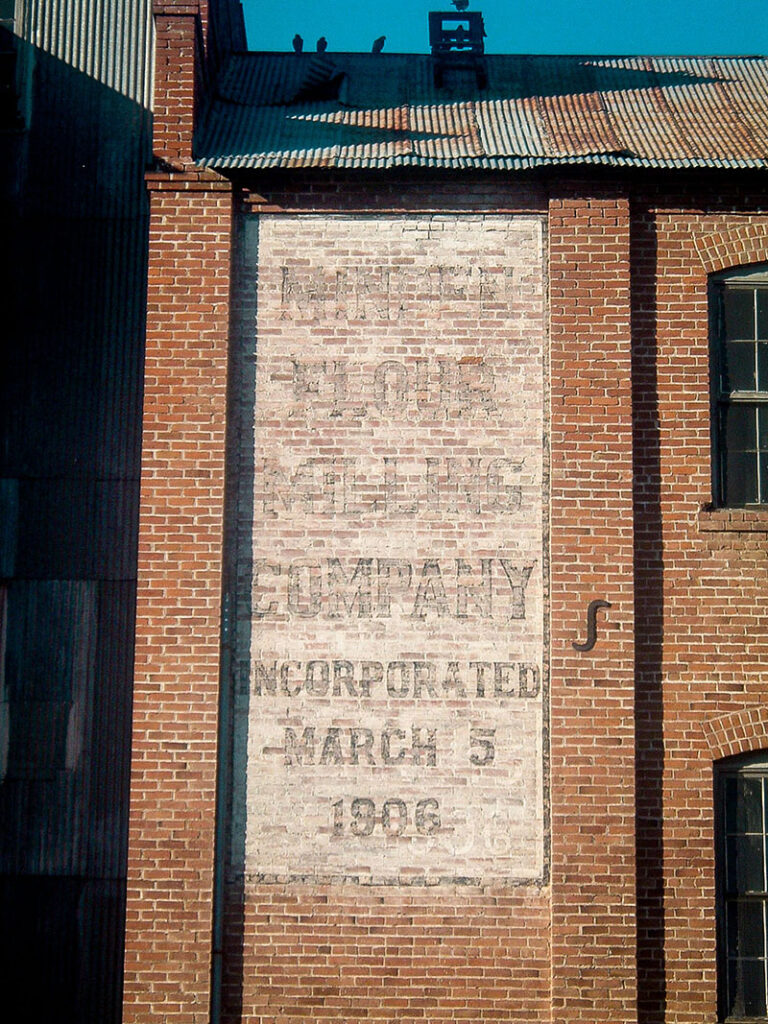Minden Flour Milling Co. was Nevada’s breadbasket.
You may have heard the term “adaptive reuse,” which is lingo for rehabbing a structure for a new purpose. It’s recycling on a grand scale, and perhaps no other location in the Reno-Tahoe area exemplifies the idea better than the original Minden Flour Milling Co. site. Once a landmark of Carson Valley’s importance as a breadbasket, more than 100 years later, the distinctive buildings now are home to Minden Mill Distilling.
Makings of the Mill
When you’re driving on Highway 395 through Minden, it’s hard to miss the silos on the eastern side of the road. They were built for the Minden Flour Milling Co., and the silos and buildings are the only remaining evidence of five flour mills erected in the Carson Valley between 1854 and 1906. Grist (or flour) mills were among the first manufacturing establishments constructed in this agricultural valley. Such mills played an important role in early Nevada history, not only providing flour for emigrants heading west along the Carson River route of the Mormon Trail, but also helping settlers to establish a local industry. The mill had an initial production capacity of 100 barrels of flour per day, and the adjoining storage silos were able to hold 2,000 tons of grain.
The story behind the Minden Flour Milling Co. structures began in 1906, with area pioneer H. F. Dangberg. He was instrumental in bringing the V&T Railroad to the area, to transport the abundant hay and grain production out of the valley. The mill was built for the Dangberg company, in two sections: a three-story brick building and a cluster of four, 45-feet-high, steel silos. A 3.5-story enclosure connected the silos to the mill building. Additions on the south and east sides of the brick structure were completed in 1908. During the first decade of Minden’s existence, the mill was the town’s tallest building. In 1921, it was described as “one of the biggest milling concerns in the state, with a reputation for excellence.” Besides flour, lines of chicken mash and cattle feed were produced.

The bricks were locally fired. The mill was built by F. G. Wezer of Oakland, Calif., who received the contract in 1906 to build both it and the Dangberg warehouse, five months after the first train arrived in town. The power to operate the mill was imported from Truckee River General Electric. The mill manufactured flour until 1938, when its business was entirely converted to production of livestock feed made with local grain. The railroad hung in a little longer, continuing to serve the agricultural and business enterprises from Minden to points north until 1950, when the railroad was abandoned.
Adapting the Mill
The buildings traded hands a few times over the years, losing more of their grandeur with each decade. The remaining mill ceased to operate in the late 1960s and was purchased by Bently Nevada Inc. in 1975. The property saw new life when Christopher and Camille Bently arrived with a plan to create a distillery and revitalized the historic site, to the standard of LEED certification. The mill once again processed grains grown on the estate, for spirits production. The renewed property glowed, and I like to think Dangberg would approve. In 2023, Foley Family Wines, a family-owned wine and spirits company based in Sonoma, acquired the site. Today, FFW produces spirits at this facility, also from locally sourced grains, and features a tasting room.
Adaptive reuse is in full display in Minden as important landmarks such as the Minden Flour Milling Co. remain long after their original functions have ended. These specific edifices were included in the Federal Registry of Historic Buildings list in 1978. Tip your hat to these grand structures next time you pass through Minden — or, better yet, make a reservation in the tasting room.


